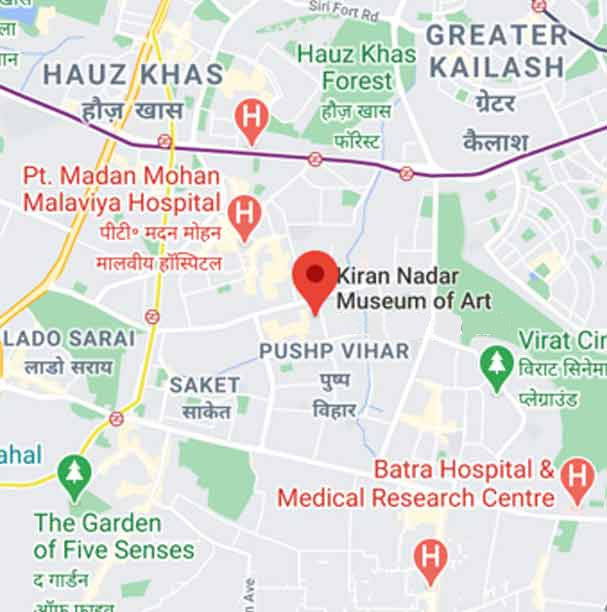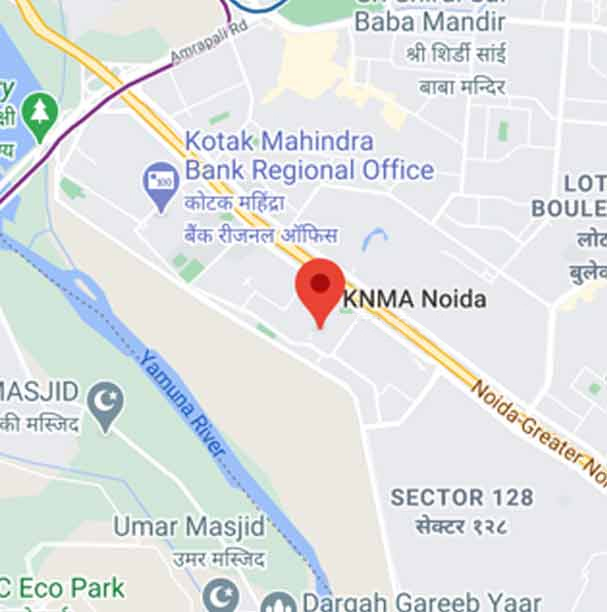- Home
- TEENS/ADULTS
TEENS/ADULTS
Craft Connects
Learn about India's colourful cultures by exploring the fascinating world of local Indian arts and crafts with Craft Connects, in collaboration with Dastkar. Here skilled people will create many types of decorative pieces out of paper, clay, colours and other cheap tools. It preserves the rich traditional art forms and heritage along with the talents which are associated with the people’s history and lifestyle. In India artifacts are being made from centuries and people around the world love these.

Sanjhi Art, Uttar Pradesh
Sanjhi is the ancient art of paper stencilling practised across Mathura and Vrindavan. It was traditionally used to make ritualistic and ceremonial rangolis in temples dedicated to Lord Krishna. The term Sanjhi is derived from Sanjh or dusk. It is related to the ritualistic practice of unveiling the rangoli in the temples with chanting at dusk.
In olden times, the stencils were made using rough paper or banana leaves but contemporary artisans have started creating artworks using handmade and recycled paper. Traditionally, the stencil was used to create the only rangolis, but gradually the stencils caught the interest of the patrons. Now, the stencil is considered at par with the final decoration. The cut-outs are available as framed artworks as well.
Cutting of the paper is a very delicate and precise procedure. A little slip will cut off the portion to be left intact and the entire procedure will be meaningless.
Blue Pottery, Rajasthan
This traditional craft of Jaipur is given the name ‘Blue Pottery’ due to the predominance of the colour blue.
However, by the 1950s Blue Pottery had almost vanished. Muralist and painter Kripal Singh Shekhawat with the support of Kamladevi Chattopadhyaya and RajmataGayatri Devi revived the craft. A combination of wheel turning and moulding techniques is used to produce various shapes for the pottery. After the object is sanded and dried a clean white coat is applied to the surface to give it a smooth, improved texture. Floral, animal and bird motifs are painted on it and the object is given a glass glaze at a low temperature. It is during the firing that the objects attain transparency and shades of turquoise blue, pale green, yellow and brown.
Grameen Blue Art Pottery, a regular in the DASTKAR bazaars, has always had great sales with us. Pots, vases, tea sets, cups and saucers, plates and glasses, jugs, ashtrays made by them are a huge hit with shoppers
Papier Mache, Kashmir
Lateef Hussain Khan from Chinar Valley Arts running this group.
In Kashmir, Papier Mache originated in the form of making qalamdans (pen cases) from paper pulp (Base). These are covered with floral or geometric patterns and finished with a coat of Rogan (Varnish); it was for this reason that the craft was initially referred as Kariqalamdan (the art of making pen cases).
Papier Mache products involves two processes: Sakhtasaazi (basic object is made of a light weight material by a different community called saktasazi., who fashions the base product) and Naqashi (Painting) giving decorative touch, painting by fine hands for intricate designs, done over it.
This art form is primarily based on paper pulp, and is richly decorated, colorful artifact; generally, in the form of vases, bowls or cups, bases of lamps and many other small objects. These are generally made in homes or workshops, in Srinagar and other parts of Kashmir.
Handblock Printing, Rajasthan
Meena Kumari Chhippa, Hand Block Artisan. The art of chapa (block printing) gave them the name Chhipa
Bagru is a village located 32 km west of Jaipur, the capital City of Rajasthan. It has long been home to the Chippa Community, a caste dedicated to the art of hand block printing Bagru printers use a technique called dabu in which a mixture of black clay, acacia gum, spoiled wheat flour, limestone, and cow pies is printed onto the fabric. The fabric can then be dyed and left in the sun to dry. When the dabu is washed out the printed portions of the fabric are left undyed. the village has kept up its tradition of using natural dyes. These dyes include indigo blue, madder root red, pomegranate yellow, harda yellow, syahi black, and a green obtained by mixing harda and indigo.
No authentic literature is available to indicate the beginning of this kind of printing, but this art is said to have started around 450 years back. The village had a community of CHHIPAS, or traditional crafts people who printed fabrics by hand. Bagru chhipas came from Sawai Madhopur, Alwar, Jhunjhuna, and Sikkar districts of Rajasthan to settle in Bagru and make it their home outset around 450 years ago. They are known for their unique designs of luxuriant trellises in sophisticated natural colors.
Lippan Art
Mud and mirror work are known as Lippan Kaam. It is a traditional mural craft of Kutch also known as ChittarKaam. Various communities in Kutch do mud-relief work and have their own distinct style of lippan kaam.
The motifs are inspired from the embroidery patterns and once the walls are done, they look stunning with mirrors embedded in the mud work, much like the embroideries itself.
Ramju Kumbhar belongs to Mankuva in Bhuj, Kutch in Gujarat. He has been practicing this craft since the past 25 years and started learning it from his father when he was in grade 7, in school.
The modern-day version of lippan work is seen on MDF ply cut into neat square, rectangle or circular surfaces and used as home decor and as artworks at hotels and offices
Photography Workshops – The Art of Mobile Photography
Turn your mobile into a high end camera! Learn how to make the most of your mobile to create works of art. This 4 part series will take you through the creative process involved in capturing stunning photographs from your phone. It will offer you tutorials on a broad range of fundamental principles in photography from camera control to creativity. You will learn the basics of mobile photography, creating compositions for visually photos, macro photography and editing. Don’t forget to tune in!
Workshops :
Session 1 : Introduction to Mobile Photography
On the first episode of our Mobile Photography Workshop, get introduced to basic tricks and tips that will help you make the most of your mobile phone camera to capture beautiful images with ease
Session 2 : Composition in Photography
On this episode of our Mobile Photography Workshop, learn more about the different principles of composition that allow you to tell the story you want through the elements you capture.
Session 3: Macro Photography
In this episode of our Mobile Photography Workshop, learn how to capture the intricate details of any object with finesse through the mode of Macro Photography on your mobile phone.
Session 4 : Photo Editing
Tune into the final episode of our Mobile Photography Workshop and master essential editing skills that can help you make your photographs stand out from the rest!
Tribal Art Series
Phad paintings of Rajasthan are a traditional medium of storytelling. Various folk-art forms in India are significant for their story telling style, vibrant colours and natural dyes. Let’s learn the art of storytelling through the art of chad painting with award winning artist, Kalyan Joshi who joins us all the way from Rajasthan!
-
Phad painting(Kalyan Joshi)
Phad paintings of Rajasthan are a traditional medium of storytelling. Various folk-art forms in India are significant for their story telling style, vibrant colours and natural dyes. Let’s learn the art of storytelling through the art of chad painting with award winning artist, Kalyan Joshi who joins us all the way from Rajasthan!
-
Madhubani Painting (Ambika Devi)
Madhubani art is a style of Indian painting, practiced in the Mithila region of the Indian subcontinent. This painting is done with a variety of tools, including fingers, twigs, brushes, nib-pens, and matchsticks and using natural dyes and pigments.
Join Ambika Devi as she not only shows us how to make a traditional Mithila painting, but also rise against the odds and do something for yourself, without proper education or means to a career. -
Miniature Painting (Hari Narayan Marotia)
The Miniature painting tradition can be traced from the 9th-10th century. Influenced by Indian literature, they were executed as illustrations to texts or as individual paintings. Join us and learn the art of these small-scale and highly detailed compositions with Hari Narayan Marotia from Rajasthan.
-
Pichwai Painting (Dinesh Soni)
Established over 400 years ago, the tradition of Pichwai Painting comes from the town of Nathdwara near Udaipur, Rajasthan. These paintings, which are made on cloth, beautifully visualise tales from Lord Krishna's life in vivid detail.
Join us and experience the precision and skill of Pichwai Painting with Dinesh Soni from Rajasthan. -
Pattachitra Painting (Asish Ku Das, Orissa)
Pattachitra is a spectacular folk-art form from Odisha. The word 'Patta' means cloth, and 'Chitra' means picture. An art form that utilises natural colours, Pattachitra painting is a disciplined art form preserved by rules that uphold its aesthetic effervescence.
Learn the intricacies of Pattachitra with Asish Ku Das, who is joining us all the way from Odisha!
Brush Lettering & Calligraphy
Enter calligraphy - the ancient art decorative handwriting and lettering. It’s more than an expression of beauty and aesthetics. Writing slowly and deeply is a meditative process that helps us express and reconnect with ourselves. It holds up a mirror to our nature and behaviour.
Kiran Nadar Museum of Art (KNMA) along with Inku Kumar(founder, Calliart & facilitator to this workshop) brings on experimental as well as traditional approaches to the art of Calligraphy. Students are given a thorough hands-on introduction to the subject and swiftly master the basics while honing their own individual styles. One of the first things we learn in school is to draw and conjoin different lines to create alphabet letters. This teaches us language, a way to make sense of the world and participate in it. With Kumar’s guidance, students turn that elementary life lesson into a grand artistic journey through this workshop.
*The workshop is for 2 Days and participants need to enrol only once.

Links for registration:
KNMA Saket :
Workshop Dates – 17th & 19th March 2020
https://insider.in/brush-lettering-calligraphy-mar17-2020/event
KNMA Noida :
Workshop Dates – 24th & 26th March 2020
https://insider.in/brush-lettering-calligraphy-mar26-2020/event






